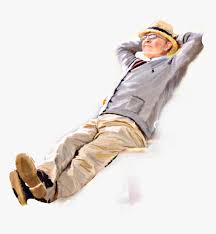Post by Beekster on Aug 15, 2024 18:50:21 GMT -6
While awaiting decals for the boxcar shed and crane, and while other decals are drying on the improvised gondola, I will begin the next rolling stock project. Big cranes and their boom tenders are integral pieces of the maintenance of way puzzle. The crane's uses are obvious; it lifts stuff and moves it around. The boom tender (usually based on a flatcar) is less obvious. What it does is provide tools & materials that make the crane more effective which includes things like snatch blocks and chains, tools to maintain the crane, and useful stuff like wheel sets and ties that might be needed at a derailment. Sure, there are a few of these cars available as ready-to-run purchases. But those are quite simplistic, and don't capture the rather exotic nature of these cars. You see, many of them are home-built jobs created by the railway itself. Here are images of a few that I crabbed from the internet:



Note that all three are different. They all include a structure on one end. Office? Small shop space? Both? I have no idea. There's a truncated boxcar with doors and windows for one, a cut-down passenger car for another, and what looks like a cut down baggage car for the third. All of them have some kind of sidewall to retain materials, and the boxcar version might show a good sized stowage bin in front of the shed structure. The bottom line is that there is a lot of room for improvisation here.
The basic materials for this are a 50' flatcar courtesy of eBay and a 40' boxcar, seen here:

I was undecided on what to use for the structure until last Saturday, when I made my first visit to The Whistle Stop in southeast Portland. It's a candy store for model railroaders. The boxcar kit was in their bargain closet for $3. Initially I wasn't enthusiastic about sacrificing a whole kit just to cut up the car body, but at that price I couldn't say no. A bare shell off eBay would have cost five times as much with shipping, so the unused bits will go into the spares bin.
I started with removing the ATSF markings on the flatcar. I wanted to keep the rest of the stenciling, so I used a trick described in one of my reference books: I soaked the lettering in Micro-Sol decal setting solution, and when it was nearly dry I rubbed the lettering off with a toothpick. Works great on markings that are inks applied to the car body.

That done, I mocked up the flatcar with the crane and made an estimation of how big to make the shed structure. As it turns out, cutting it up at the edge of the loading door was the right play. So I cut the car body and the floor, and sanded both smooth. I also removed molded grab handles and the end support for the roof walkway, which I deleted. I filled the holes for mounting the walkway with styrene tube and carved & sanded the filled areas to restore the roof contour. I also added strip stock inside the sidewalls at the front to support the front panel & door that will eventually reside there.



The last image is a mock-up, and the placement will work just fine. More to come as work progresses. I have to make a front panel with door, cut the rear door opening and frame that in, and locate and cut the openings for the windows on the sides. For that I'll use the same procedure as I used for the converted boxcar shed.



Note that all three are different. They all include a structure on one end. Office? Small shop space? Both? I have no idea. There's a truncated boxcar with doors and windows for one, a cut-down passenger car for another, and what looks like a cut down baggage car for the third. All of them have some kind of sidewall to retain materials, and the boxcar version might show a good sized stowage bin in front of the shed structure. The bottom line is that there is a lot of room for improvisation here.
The basic materials for this are a 50' flatcar courtesy of eBay and a 40' boxcar, seen here:

I was undecided on what to use for the structure until last Saturday, when I made my first visit to The Whistle Stop in southeast Portland. It's a candy store for model railroaders. The boxcar kit was in their bargain closet for $3. Initially I wasn't enthusiastic about sacrificing a whole kit just to cut up the car body, but at that price I couldn't say no. A bare shell off eBay would have cost five times as much with shipping, so the unused bits will go into the spares bin.
I started with removing the ATSF markings on the flatcar. I wanted to keep the rest of the stenciling, so I used a trick described in one of my reference books: I soaked the lettering in Micro-Sol decal setting solution, and when it was nearly dry I rubbed the lettering off with a toothpick. Works great on markings that are inks applied to the car body.

That done, I mocked up the flatcar with the crane and made an estimation of how big to make the shed structure. As it turns out, cutting it up at the edge of the loading door was the right play. So I cut the car body and the floor, and sanded both smooth. I also removed molded grab handles and the end support for the roof walkway, which I deleted. I filled the holes for mounting the walkway with styrene tube and carved & sanded the filled areas to restore the roof contour. I also added strip stock inside the sidewalls at the front to support the front panel & door that will eventually reside there.



The last image is a mock-up, and the placement will work just fine. More to come as work progresses. I have to make a front panel with door, cut the rear door opening and frame that in, and locate and cut the openings for the windows on the sides. For that I'll use the same procedure as I used for the converted boxcar shed.

















